The 80/20 Rule Diet: Benefits, Side Effects, And Meal Plan
The ideal diet for those who have health goals as well as a sweet tooth.
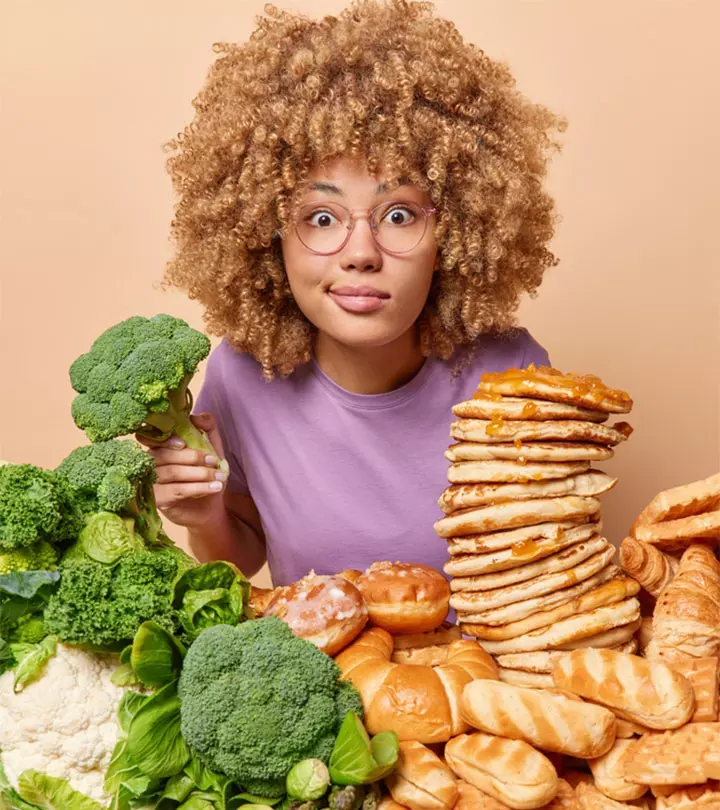
Image: Shutterstock
The 80/20 rule diet can be a blessing for those who find it difficult to always stick to a healthy diet. The diet allows you to indulge 20% of the time if you can stick to healthy eating 80% of the time. Unlike other restrictive diets, it helps you stay consistent while allowing you some liberty to savor your favorite foods without feeling guilty. But that is not all – as the diet also has some important rules to follow.
Understanding these rules will help you get a better grip on your eating habits and achieve your health goals. Scroll down to learn more about the 80/20 rule diet, its benefits, and possible side effects, and what foods to eat.
 At A Glance: 80/20 Rule Diet
At A Glance: 80/20 Rule Diet- Principle: Intake of healthy foods 80% of the time with an allowance for indulgences 20% of the time
- Purpose: To encourage healthy eating to maintain overall well-being and support weight loss
- Who It Is For: Those who have busy or irregular lifestyles and are trying to adopt healthy eating habits
- Duration: Long-term
- Who Should Avoid: Those with metabolic health conditions like diabetes or high cholesterol levels
- Cons: May not work for everyone and may lead to binge eating and weight gain
In This Article
What Is The 80/20 Rule Diet?
The 80/20 rule diet is not strictly a diet plan. It, instead, is a way of eating and a lifestyle where you consume nutritious meals 80% of the time and relax food restrictions the remaining 20% of the time. This method helps you adopt healthier eating habits and balances your nutritional requirements. As this diet promotes flexible food options, it can complement weight loss diets like the CICO diet which mainly focuses on calorie deficit, often overlooking nutrition.
While how it is to be practiced is open to individual interpretation, this diet is also called the weekend diet as you can eat your favorite foods for two days after eating healthy foods for five days in a row. This idea goes against the theory of dieting, which can often cause side effects. One study notes that, in some cases, dieting may backfire and lead to binge eating (1). However, the 80/20 rule diet can save you from such restrictions as it offers a diverse menu.
Mary Sabat, a Registered Dietitian, says, “It may be more suitable for weight maintenance as the 20% “cheats” will back fire for someone trying to lose weight.”
A carefully planned 80/20 rule diet can give you the best of both worlds. Read more to learn how this diet can help you in your health journey.
Key Takeaways
- The 80/20 rule diet balances healthy eating with occasional indulgences in an 80/20 ratio.
- It’s suitable for busy individuals who want to make mindful dietary choices for long-term health benefits.
- Its major characteristics include simplicity, diverse food options, and flexibility.
- Its effectiveness for weight loss is uncertain, and it may not be suitable for people with health conditions such as diabetes.
How Does The 80/20 Rule Diet Work?
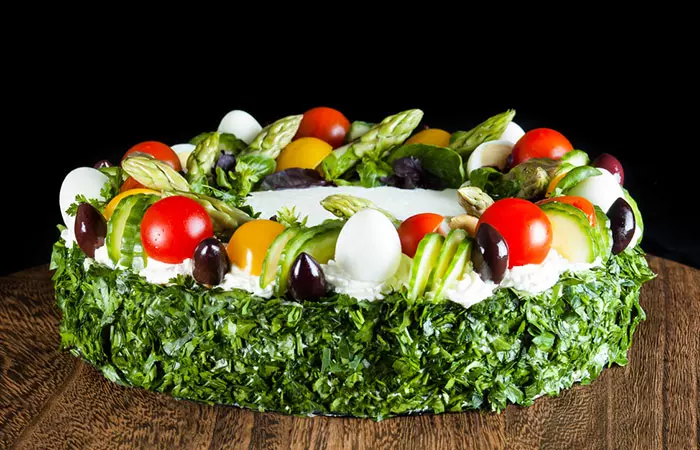
- Balances Your Meals
The premise of the 80/20 rule diet is to welcome balanced and nutritious meals and snacks. It involves choosing unprocessed and whole foods such as fruits, vegetables, whole grains, lean proteins, and healthy fats for the majority of your diet (80% of the time).
- Focuses On Moderate Intake Of Treats
It does not fully eliminate the consumption of fatty, sugary, and processed foods. Instead, the diet gives you the freedom to enjoy occasional treats (20% of the time) so that you do not lose control or slip back into unhealthy eating patterns.
The 80/20 rule diet can be a favorable solution for individuals seeking sustainable healthy eating. But should you follow this diet? Keep reading to know more.
Who Should Follow The 80/20 Rule Diet?
The 80/20 eating practice is beneficial for individuals who are:
- Looking for a realistic plan to stick to for the long term.
- Seeking a balanced diet that includes a variety of nutrient-dense foods with cheat days.
- Dealing with busy lifestyles that include social gatherings and celebrations that may involve unhealthy eating.
- Looking for ways to focus on mindful dietary choices.
- Athletes and fitness enthusiasts who want to have cheat meals without feeling guilty.
This diet can cater to different requirements of people and can be modified as per one’s needs. For example, the Ayurvedic diet promotes holistic wellness. So, integrating the 80/20 diet approach can allow individuals to maintain Ayurvedic principles while also enjoying some flexibility of modern dietary habits. Let us now look at some of its key benefits that make it sustainable.
Benefits Of The 80/20 Rule Diet
- Is Easy To Follow
The 80/20 rule diet is a straightforward plan that does not involve calorie counting or strict rules. Its simplicity makes it easy to understand and incorporate into your life.
- Has A Variety Of Food Choices
The diet plan encourages the intake of a diverse range of foods and does not restrict anything. Nutrient-dense foods ensure one’s overall well-being while cheat meals keep the journey enjoyable.
- Does Not Exclude Food Groups
Unlike some restrictive diets, the 80/20 rule diet does not exclude particular food groups. It instead encourages moderation and portion control. By allowing for occasional indulgences and cheat days while focusing mainly on nutrient-rich meals, this balanced approach helps reduce the guilt often associated with indulging in less nutritious options and promotes a healthier relationship with food. It also helps establish mindful eating habits and supports both physical and mental well-being.
- Is Highly Adaptable
You get to enjoy foods that are not a part of your regular diet (the 80%) when you are at social gatherings. You just have to remember to balance your upcoming meals accordingly to maintain the 80/20 ratio.
These features make this diet perfect for those who are new to dieting and want to start eating healthy. It can help kickstart your health journey and take you a step closer to your goal. That said, one of the most common goals of this diet is weight loss. But how well does it work for weight loss? We will discuss the same in the next section.
Does The 80/20 Rule Diet Work For Weight Loss?
The efficacy of the 80/20 rule diet plan for weight loss depends on various factors. A week-long healthy eating and abstinence from junk food may result in some weight loss, but there’s a catch – you may regain the lost weight over the weekend.
A study published in the journal Obesity (Silver Spring) observes that changes in lifestyle (diet or activity-related) during the weekend may prevent weight loss. It concludes that higher energy intake over a short period, such as on weekends, could lead to significant weight gain (2).
These findings may make the 80/20 rule diet seem a lot more appealing than effective. However, more research specific to its principles of healthy and balanced eating is warranted to arrive at any conclusion about its efficacy.
Nevertheless, this diet can still serve as a starting point for those who are trying to break free from unhealthy eating patterns. Keep reading to discover ways to make the right calculations with respect to this diet.
How To Calculate The 80/20 Rule Diet

Remember that the 80/20 rule diet is not set in stone. You can modify it as per your requirements while eating nutritious meals 80% of the time and relaxing the restrictions the remaining 20% of the time. You can follow any of the following approaches.
- Weekdays Versus Weekends
Eat foods rich in healthy fats, fiber, and minerals for five days of the week and your other favorite foods in the next two days. However, this approach may be counterproductive for some as it may lead to heavy calorie intake on weekends. You may prevent this by setting a few boundaries to keep yourself from binge eating in that short window.
- Counting Total Number Of Meals Per Week
Divide the total number of meals in a 7-day week and distribute them in an 80/20 ratio. For example, breakfast, lunch, snack, and dinner make for 4 meals a day and 28 meals a week. So, you can have 22 healthy meals and 6 indulgent ones throughout the week.
- Mixed Approach
Instead of eating a lot of junk food at a time, you may have it with every meal, and in moderation. Divide your daily calorie intake as per an 80/20 ratio. For example, if your daily caloric requirement is 1,600 calories, take 1,280 calories from healthy foods and the remaining 320 calories from other foods. You may also bend the rules and make it 90/10 to satisfy your cravings while limiting the intake of junk foods.
 StyleCraze Trivia
StyleCraze TriviaThe main idea is to keep your meals as healthy as possible 80% of the time so that you get to indulge the remaining 20% of the time without any guilt. However, you need to be aware of the differences between healthy and unhealthy or “indulgent” foods to make better choices. For example, while white bread is healthier than chips, it is less healthy than whole wheat bread as it has less fiber (3). Hence, your aim is to make your diet as healthy as possible by selecting more nutritious food options. Dive into the next section to learn about the right foods you can include in your 80/20 rule diet.
Foods To Eat On The 80/20 Rule Diet

Healthy foods refer to fruits and vegetables with minimal or no additives like sugars, fats, or salt (4), (5). These foods are rich in nutrients such as fiber, vitamins, and minerals that are essential for overall health. They also include whole grains, fat-free or low-fat dairy products, and lean meats. However, do watch your calorie intake to ensure you don’t overconsume calories even if they are coming from healthy foods.
 Quick Tip
Quick TipYou may include the following healthy, low-calorie foods in your shopping list 80% of the time.
Sample Shopping List For The 80/20 Rule Diet

Fruits
- Oranges
- Apples
- Watermelon
- Green grapes
- Cherries
- Berries
- Cantaloupe
- Pears
- Peaches
- Strawberries
- Grapefruit
Vegetables
- Iceberg lettuce
- Green cabbage
- Celery
- Tomato
- Sweet Corn
- Onion
- Cucumber (with peel)
- Broccoli
- Carrot
Whole Grains
- Wheat
- Barley
- Oats
- Brown rice
- Buckwheat
Lean Proteins
- Skinless chicken breast
- Turkey
- Fish
- Tofu
- Lean beef
- Pork tenderloin
- Eggs (especially egg whites)
- Greek yogurt
Your Favorite Treats
- Candies
- Cakes
- Pastries
- Patties
- Burger
- Pizza
- Cookies
- Ice cream
You might be tempted to gorge on your favorite foods once you finish 80% of your diet. But bear in mind that uncontrolled calorie intake during a short period may lead to unwanted weight gain. You can prevent that by following a proper meal plan. Check out the next section.
7-Day 80/20 Rule Diet Meal Plan
The following diet plan follows a mixed approach. You can eat any of your favorite foods as long as they do not exceed 300-350 calories (or any number of calories that constitute up to 20% of your daily intake). Also, make sure that 80% of your meals are super-nutritious and filling so that you don’t end up overindulging later.
| Breakfast | Lunch | Snack | Dinner | Eat What You Want | |
| Day1 | 1 bowl of oats with 1 tablespoon of chia seeds and 1 cup of almond milk | 6 ounces of grilled chicken breast with 2 cups of side salad of mixed greens and 1 cup of diced cherry tomatoes and cucumbers | 12 almonds | 6 ounces of baked salmon with a lemon and herb garnish and 1 cup of steamed broccoli with ½ cup of quinoa | 1 cup of ice cream sundae with 1 tablespoon of Hershey’s chocolate syrup |
| Day2 | 1 cup of Greek yogurt with 1 sliced pear and 1 tablespoon of honey | 1 turkey and avocado wrap in a whole-grain tortilla and 1 cup of baby carrots | 1 apple | 6 ounces of stir-fried tofu with 2 cups of mixed vegetables in a ginger soy sauce and 1 cup of brown rice | 1 chocolate chip pancake with 1 tablespoon of maple syrup |
| Day3 | 2 scrambled eggs with ½ cup of diced bell peppers and 1 slice of wholewheat toast | 1 bowl of lentil and vegetable soup with 2 cups of salad with mixed greens | 1 cup of diced carrots with 1 tablespoon of ranch dressing | 6 ounces of grilled shrimp with 1 cup of oats and 1 cup of steamed asparagus | 1 cup of hot chocolate cake with sprinkles |
| Day4 | 2 cups of smoothie with spinach, ½ cup of strawberries, 1 cup of almond milk, and 1 scoop of protein powder | 2 cups of quinoa salad with 1 cup of boiled chickpeas and 1 cup of diced cucumbers and cherry tomatoes | 10 walnuts | 5 ounces of baked chicken breast with 1 cup of roasted sweet potatoes and 1 cup of sautéed kale | 1 slice of cheese pizza |
| Day5 | 1 bowl of oatmeal with ½ cup of fresh berries and 6 chopped and sprinkled almonds | 2 bell peppers stuffed with spinach and feta with 1 cup of steamed green beans | 1 pear | 5 ounces of grilled sirloin steak with 1 cup of quinoa and 1 cup of side salad of roasted Brussels sprouts | 1 small piece of butterscotch-flavored cheesecake |
| Day6 | 2 whole-grain waffles with ½ a cup Greek yogurt and 1 cup of mixed berries | 4 ounces of caprese salad with fresh mozzarella and 2 diced tomatoes, ½ cup of basil leaves | 1 cup of cucumber and peanut salad | 6 ounces of baked cod with a lemon herb crust and 1 cup of brown rice | 1 glazed donut with cinnamon |
| Day7 | 2 scrambled eggs with ½ cup of diced tomatoes and 1 cup of sautéed spinach | 1 tuna salad sandwich on whole-grain bread with 1 cup of diced lettuce, tomato, and cucumber | 2 brown rice cakes | 6 ounces of baked haddock with 1 cup of quinoa and 1 cup of sautéed asparagus | ½ of a double cheeseburger |
The above 80/20 rule diet plan is practical and sustainable. You can customize it easily according to your preferences and health goals, such as weight loss or muscle gain. Scroll down for some tips on how to ensure you stick to it.
Tips To Stay On Track With The 80/20 Rule Diet
Here are some simple tips that will help you stay on track with your 80/20 diet plan:
- Plan ahead by creating a weekly meal plan that includes nutritious meals such as grilled chicken with steamed vegetables, quinoa salad with mixed greens, or a fruit and yogurt parfait.
- Reserve specific times for indulgences, not to restrict yourself, but to prevent spontaneous overeating. These moments are for you to enjoy in moderation, not for overindulging. It’s all about balance. Use a food diary or app to monitor your progress.
- Use a food diary or app to keep track of your progress.
- Practice mindful eating by savoring each bite and paying attention to your hunger and fullness cues.
- Prep meals and snacks in advance to avoid reaching for less healthy options when you are busy or tired.
Every diet has pros and cons. While the benefits of the 80/20 rule diet grab all the attention, its side effects should not be overlooked. Let us now explore the potential downsides of this diet.
Side Effects Of The 80/20 Rule Diet

- May Not Work For Everyone
The 80/20 rule diet is not a one-size-fits-all solution. It may not work for those who need to lose weight and have metabolic health conditions like diabetes, heart disease, etc. This is because processed foods pose dangers to human health (6).
- Lacks Structure
The 80/20 rule diet can be too flexible as it lacks any fixed form or structure. This can make one end up overeating before they realize it.
- May Lead To Binge Eating
A long, stressful week, staying too hungry, or the mere sight of your favorite foods can make you overeat. Binge-eating fatty and sugary foods, even just on the weekends, may make you gain weight and set back all the progress you may have made (2).
Infographic: Pros Of Following The 80/20 Rule Diet
The 80/20 rule diet offers great flexibility for those who are trying to improve their eating habits amid a busy schedule. It can be followed without any strict restrictions or adherence to stringent rules. One needs to simply consume healthy foods 80% of the time and save their favorite foods for the remaining 20%. Check out the following infographic to learn about some of the major benefits of this diet.
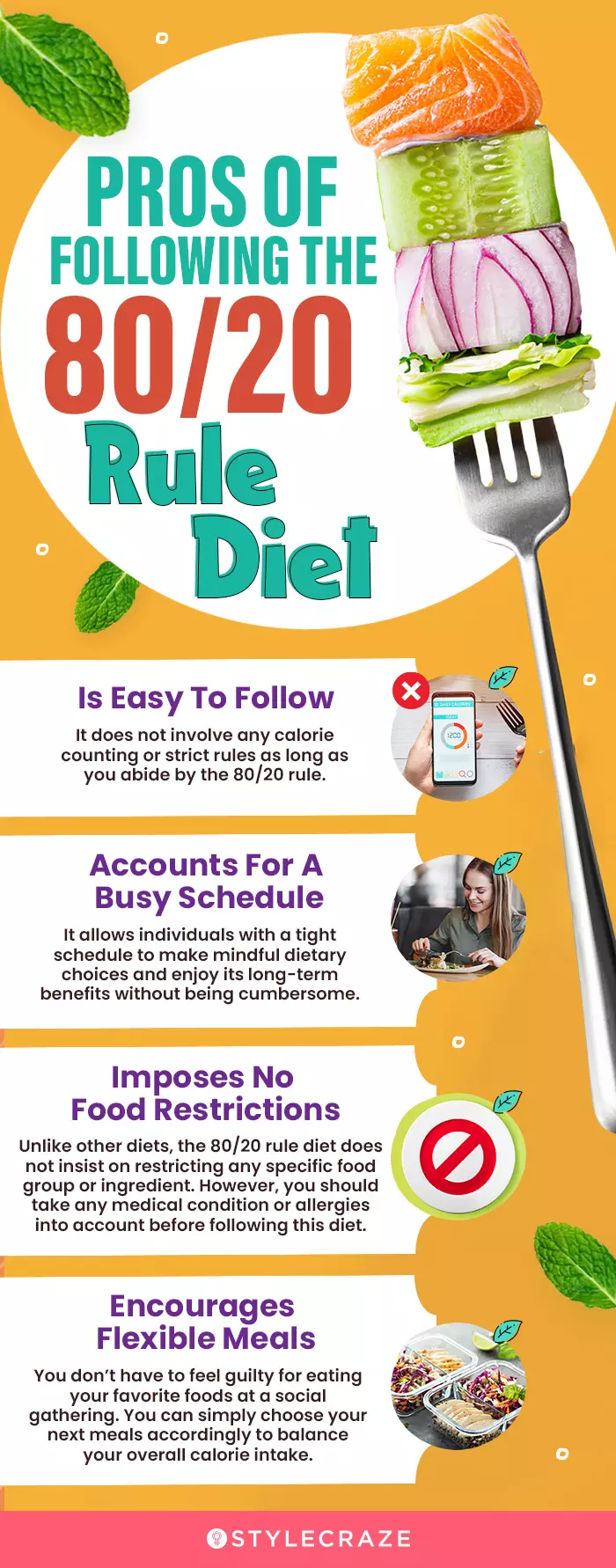
Illustration: StyleCraze Design Team
The 80/20 rule diet offers a flexible approach to nutrition. It allows individuals to enjoy their favorite indulgences while maintaining a healthy lifestyle. It brings variety to meals but does not feel restrictive. However, its effectiveness for weight loss remains inconclusive. Also, the diet may not suit everyone, especially those with specific health conditions. That said, the 80/20 rule diet can be a valuable tool for improving eating habits and finding a sustainable path toward better health when accompanied by portion control and exercise.
Frequently Asked Questions
Do I need to track my meals to follow the 80/20 rule diet?
Typically, no meal tracking is involved in the 80/20 rule diet. However, you may need to count your number of meals, portions, and/or calories if you wish to nail the 80/20 ratio.
Can the 80/20 rule diet lead to overindulgence?
Yes, suppressing the urge to indulge in not-so-healthy foods for too long may lead to overindulgence. So, you may have at least one of your favorite foods every day to avoid this.
Will I still get all the necessary nutrients with this approach?
Yes. The 80/20 rule diet focuses on eating healthy through the majority of your meals. These healthy foods include fruits, vegetables, whole grains, and animal products that can offer essential nutrients.
How can I make the 80/20 rule diet a sustainable habit?
You can make the 80/20 rule diet a sustainable habit by:
• Planning your meals
• Controlling your portions
• Enjoying its flexibility (as opposed to an all-or-none approach)
Illustration: The 8020 Rule Diet: Benefits Side Effects And Meal Plan
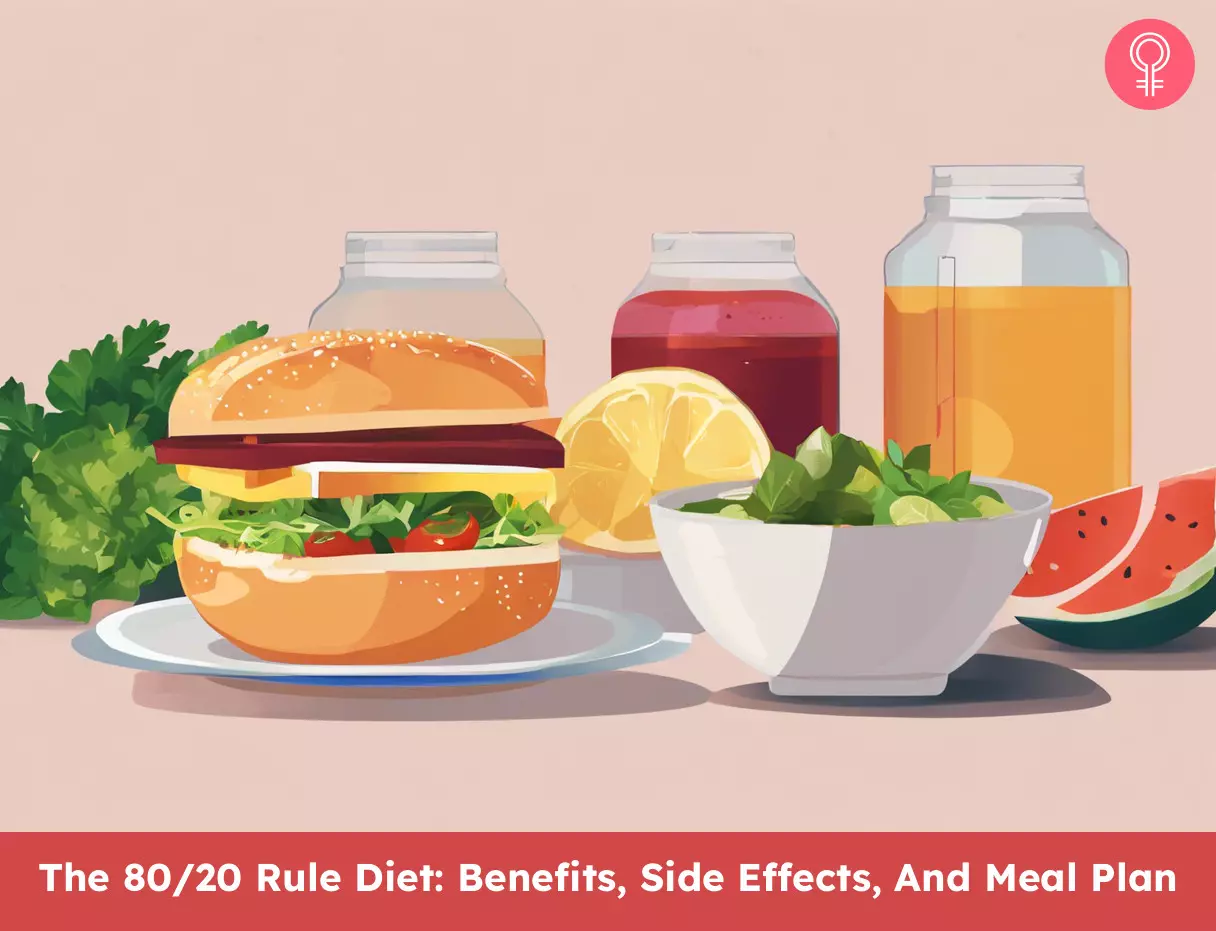
Image: Stable Diffusion/StyleCraze Design Team
The 80/20 rule diet is popular because of its adaptability! All you have to do is distribute your healthy foods and indulgences in an 80/20 ratio, respectively. Quite simple, isn’t it? Watch the following video to learn how to work it out practically.
References
Articles on StyleCraze are backed by verified information from peer-reviewed and academic research papers, reputed organizations, research institutions, and medical associations to ensure accuracy and relevance. Read our editorial policy to learn more.
- Which dieters are at risk for the onset of binge-eating? A prospective study of adolescents and young adults
https://www.ncbi.nlm.nih.gov/pmc/articles/PMC3383602/ - Influence of weekend lifestyle patterns on body weight
https://www.ncbi.nlm.nih.gov/pmc/articles/PMC3740215/ - Microstructure of whole wheat versus white flour and wheat-chickpea flour blends and dough: impact on the glycemic response of pan bread
https://www.ncbi.nlm.nih.gov/pmc/articles/PMC7557900/ - Actions for healthy eating – local government actions to prevent childhood obesity
https://www.ncbi.nlm.nih.gov/books/NBK219682/ - Health benefits of fruits and vegetables
https://www.ncbi.nlm.nih.gov/pmc/articles/PMC3649719/ - The hidden dangers of fast and processed food
https://www.ncbi.nlm.nih.gov/pmc/articles/PMC6146358/
Read full bio of Mary Sabat
Read full bio of Himanshi Mahajan
Read full bio of Ravi Teja Tadimalla
Read full bio of Moksha Gandhi






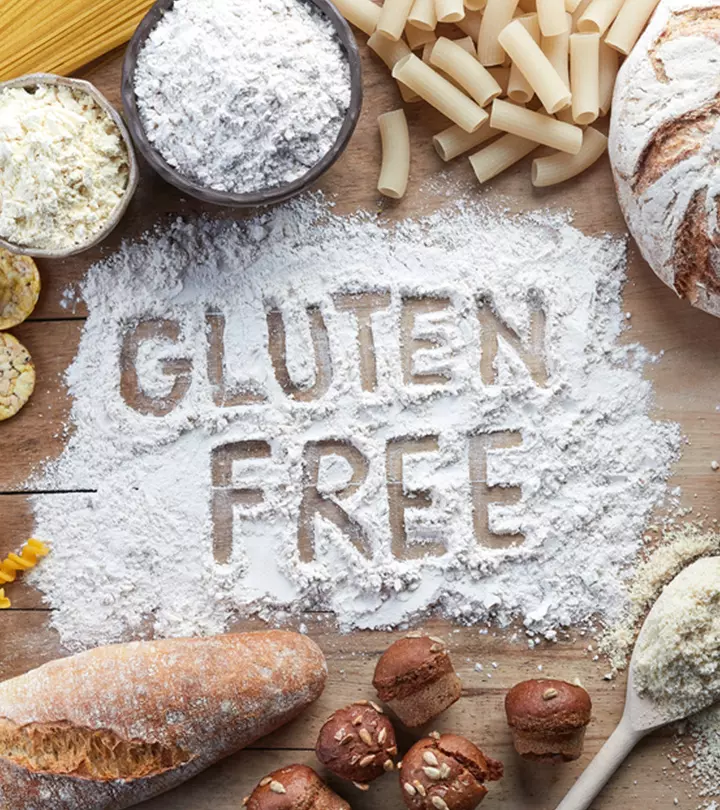
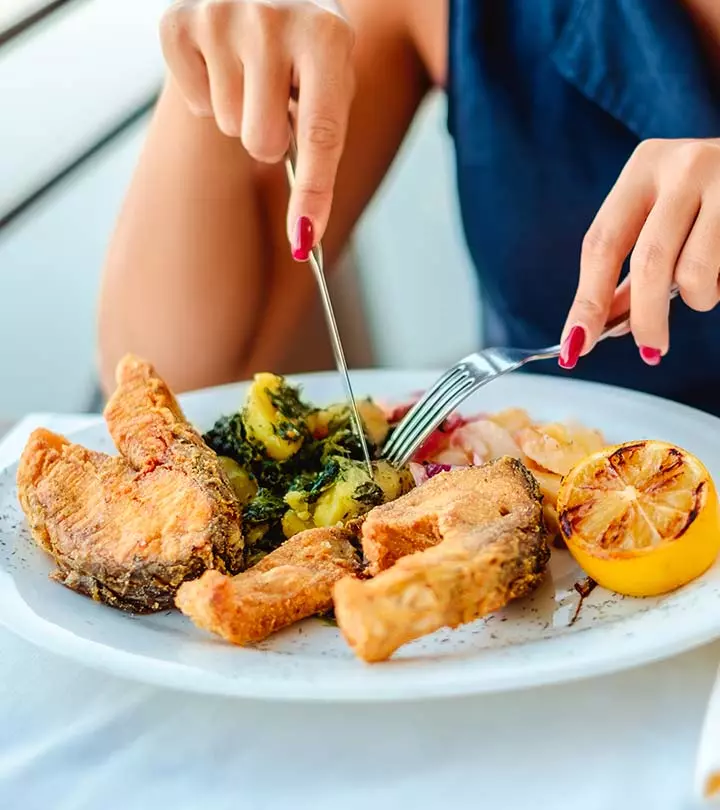
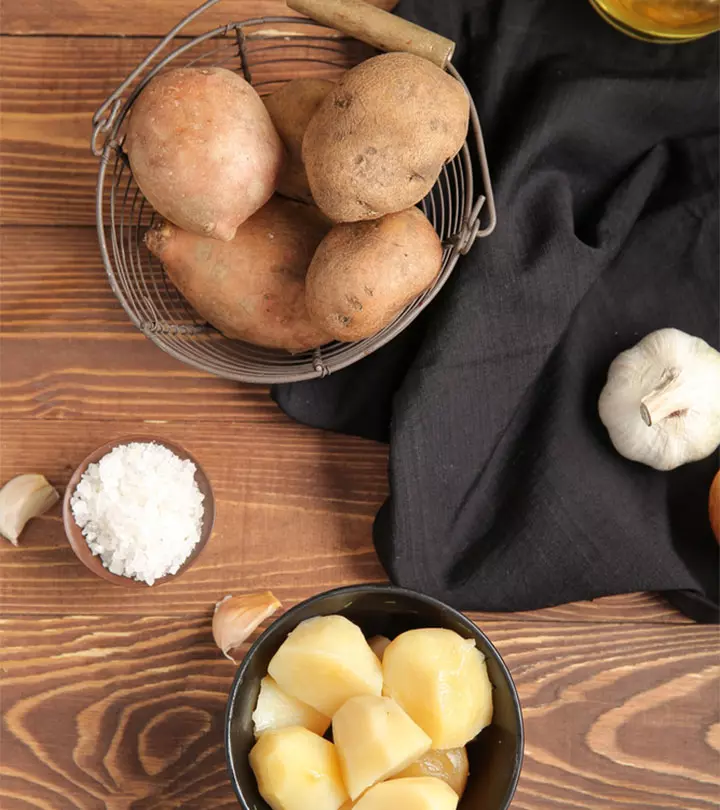





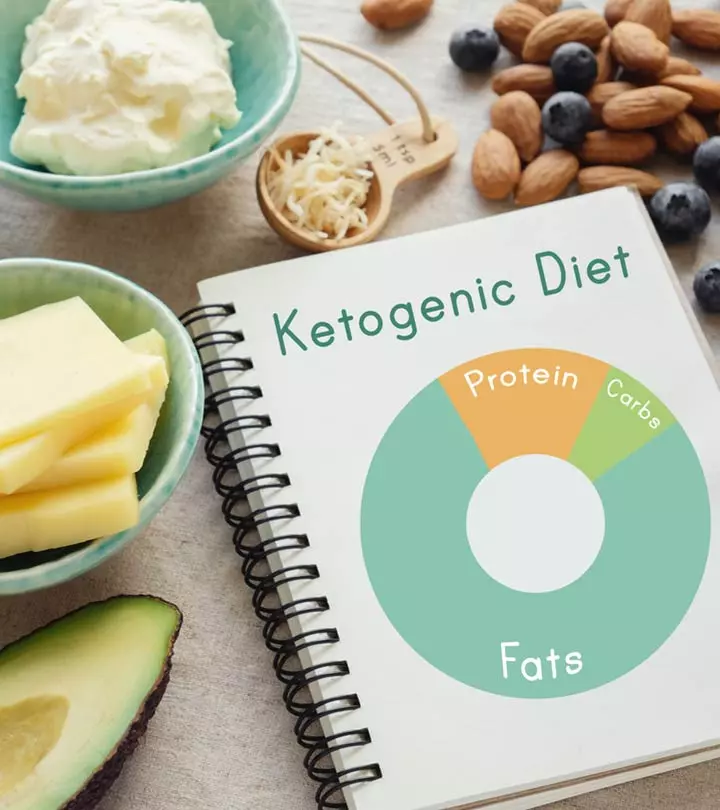
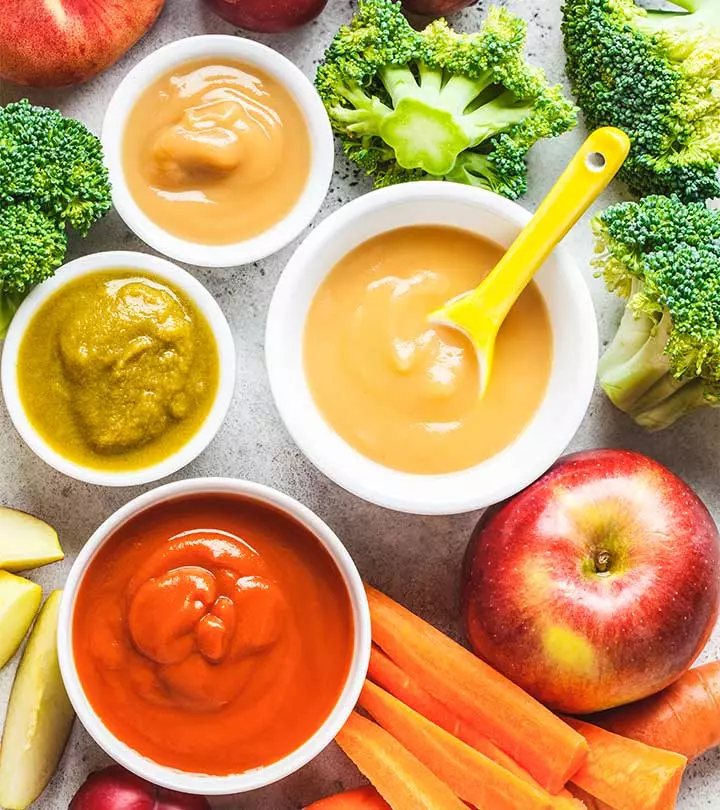
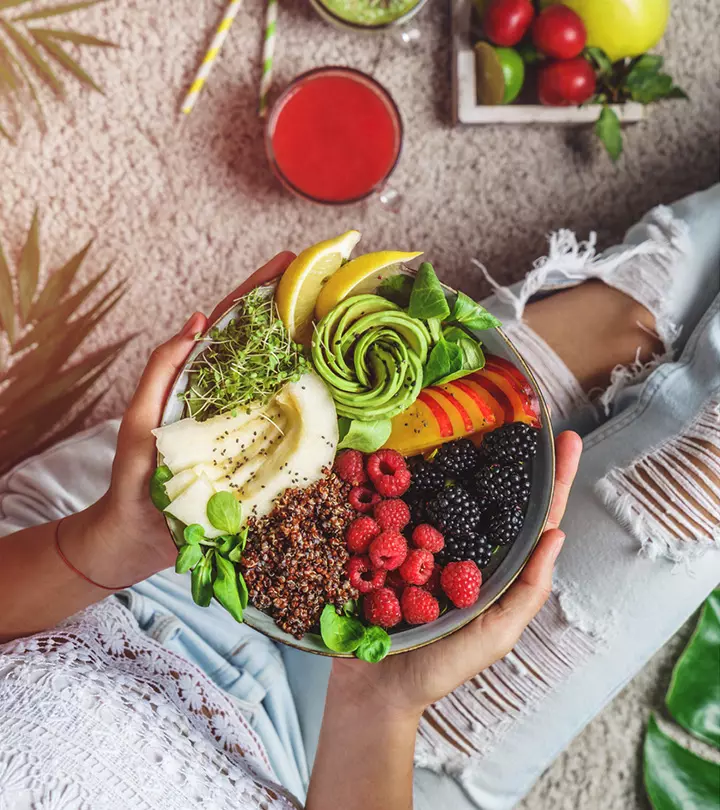


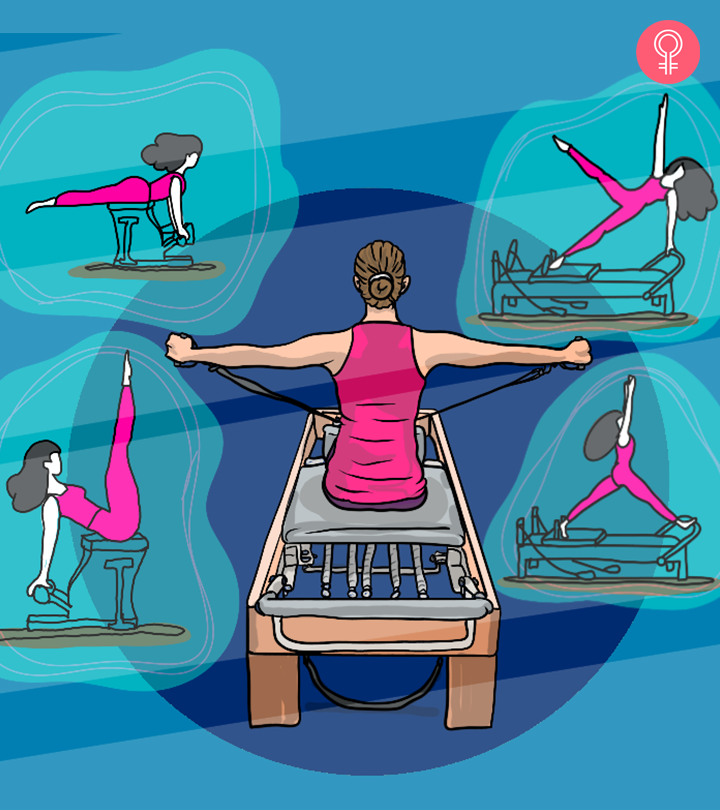
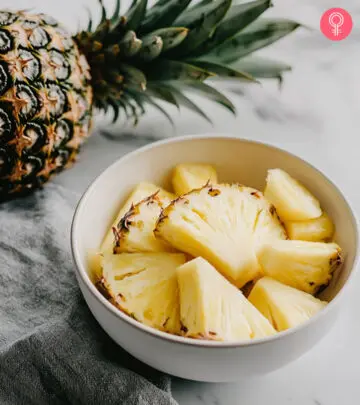





Community Experiences
Join the conversation and become a part of our empowering community! Share your stories, experiences, and insights to connect with other beauty, lifestyle, and health enthusiasts.